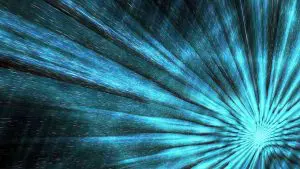The first 1997 issue of ElectronicsCooling started with a Technical Data column, the first of a still continuing series of columns devoted to data that are of interest to thermal designers. In the author's opinion, it is high time to come up with an overview of all items that have been covered over the past seven years. As is obvious from the table, the majority of columns … [Read more...]
Entrance Effects For Heat Flow Into A Multi-Layer Printed Circuit Board
Introduction Since their introduction, multilayer printed circuit boards have provided a significant benefit to the thermal management of IC packages. As is widely recognized, the power and ground planes in these boards function as fins and spread the heat beyond the package footprint and enhance heat transfer to the air. Heat can flow into these planes by conduction either … [Read more...]
Heat Transfer Enhancement By Using Nanofluids For Cooling Of High Heat Output Microprocessor
It is well known that the thermal properties of heating or cooling fluids play a major role in the development of energy-efficient heat transfer equipment. However, conventional heat transfer fluids such as water, ethylene glycol and engine oils have, in general, poorer heat transfer properties than most solids. In spite of considerable research efforts, major improvements in … [Read more...]
Keep Cool by Sensing Current to Control Fans
Control of cooling fans has become increasingly popular as efforts are made to reduce system power consumption and mechanical fan noise. The purpose of including a fan is to reduce temperature and keep it as low as possible. Mean time to failure for a variety of systems increases rapidly as temperature elevates. This has brought about a wide choice of thermally based fan … [Read more...]
Opto-electronic Transceiver Modules, a System Design Perspective
Introduction Small Form Factor (SFF) optical transceiver packages for use at 1-2 Gbits/s data rates have been described by several authors [1-5]. These rely on dual miniature optical connectors such as the MT-RJ or the LC to provide optical-component case widths as small as one centimeter. Passive alignment of the optical fibers with the active optical devices is achieved with … [Read more...]
- « Previous Page
- 1
- …
- 46
- 47
- 48
- 49
- 50
- …
- 79
- Next Page »













